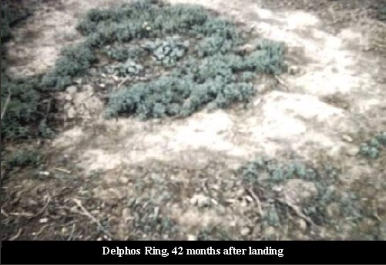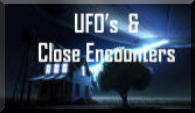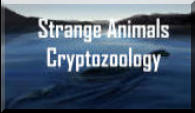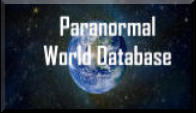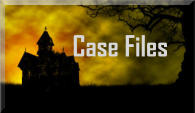DELPHOS UFO LANDING
A very credible UFO encounter occurred in the small town of
Delphos, Kansas in 1971. This case has never been debunked,
and is still considered as one of the very best physical trace
cases involving a UFO landing.
Sixteen year old Ron Johnson, along with his dog Snowball,
was tending the family sheep when his attention was suddenly
drawn to a mushroom-shaped UFO appearing in the night sky.
The flying object, metallic with multi-colored lights, was
hovering approximately 75 feet away from Ron among some
trees. Johnson estimated the craft was only a few feet above
the ground. He estimated the crafts diameter at 6-8 feet.
Stunned by what he was looking at, he tried to get a closer look, but the brilliant luminance of
the craft did not allow him to make out any additional details. Ron described the craft as
making a loud sound, "like an old washing machine which vibrates." The glow of the objects
bottom increased as it began to rise up into the sky. Ron would later state that he was
temporarily blinded by the brightness of the craft as it ascended.
After he regained his sight and composure, he ran back to the family house to alert his mother
and father, Erma and Durel. The bright, glowing object was now even higher in the sky. Ron's
parents came running around the side of the house to get a glimpse of the unusual
phenomena. They arrived just in time to see the object, now big as the full moon, as it
disappeared from view.
The three Johnsons were shocked to see a glowing ring on the ground, right below where the
craft had hovered. There was also a glowing material on some of the trees nearby. Family
members would agree that the ground around the glow "felt strange, like a slick crust, as if the
soil was crystallized." Ron's mother's fingers went numb, like she had been given a local
anesthetic. After they were sure the craft was not returning, the family settled down for the
night.
When dawn broke the next day, the family immediately returned to the sight of the glowing
ring, and to their surprise, it was still there! The inside and outside of the ring was damp from
a rain shower, but the exterior of the ring was amazingly dry. The ring had a crusty
appearance, as though the rain had simply ran off, leaving it bone dry.
Slightly over a month later, after a snow fall, the white ice had melted both inside and outside
of the ring, but the ring itself maintained the snow drift. Investigators experimented with the
ring by removing snow from a section of it, and pouring water on the exposed part. The soil
would not allow the water to pass through.
The Johnsons told their story to the local newspaper, The Delphos Republican. Reporter Thaddia
Smith, along with several members of her family, drove back out with the Johnsons to see the
site of the UFO landing and the strange ring. Smith's report was as follows:
"The circle was still very distinct and plain to see. the soil was dried and crusted. The circle or
ring was approximately 8 feet across, the center of the ring and the outside area were still
muddy from recent rains. The area of the ring that was dried was about a foot across and was
very light in color.
The object had crushed a dead tree to the ground either when it landed or took off, and from
appearance had broken a limb of a live tree when it landed. the broken limb was most unusual,
it would snap and break as though it had been dead for quite some time, yet it was green
under the bark, and the upper area still had green leaves clinging to its branches.
However the lower area looked as though it had been blistered and had a whitish cast. "
Later the same day, Sheriff Enlow, Undersheriff Harlan Enlow, and Kansas State Highway
Patrolman Kenneth Yager investigated the ring after being alerted to the factis of the case by
Thaddia Smith. Harlan Enlow filed this report:
"...we observed a ring shaped somewhat like a doughnut with a hole in the middle. The ring
was completely dry with a hole in the middle and outside of the ring mud. There were limbs
broken from a tree and a dead tree broken off there. There was a slight discoloration on the
trees."
Further experimentation showed the ground under the ring to be dry to a depth of one foot.
The
ring itself was composed of a whitish substance,
which was sent to a laboratory for analysis. The
findings were as follows:
[it was resolved into fibers which] was vegetal in
nature and belonged to an organism of the order
of Actinomycetales, which is an intermediate
organism between bacteria and fungus... family
actiniomycete, genus Nocardia... [and is] often
found together with a fungus of the order
Basidomycetes, which may flouresce under
certain conditions... one possible interpretation
is that high energy stimulation triggered the
spectacular growth of the Nocardia and of an
existing fungus, and caused the latter to flouresce.
There would also be another witness to corroborate Ron Johnson's account of the UFO. Sheriff
Enlow told the press;
"On 11-03-71 Mr. Lester Ensbarger of 416 Argyle St. in Minneapolis advised Deputy Sheriff
Leonard Simpson that at approx. 7:30 p.m. 11-02-71 he had observed a bright light
descending in the sky in the Delphos area."
Professional skeptic Phillip Klass suspected that the Delphos case was a hoax. He believed that
the ring in the ground was a result of a water trough used by the sheep that was at the location
of the circle for many years. He alleged that years of sheep urinating around the trough was
the most likely cause of the circle, and that once the trough was moved, the circle remained.
Because of Ted Phillips’ careful preservation of the soil samples from Delphos, another analysis
was performed in 1999 by Phyllis Budinger, a chemist and retired research scientist for
BP/Amoco. She found an unusually high concentration of Oxalic acid. Budinger’s report included
a possible explanation of the existence of Oxalic acid offered by her colleague, Dr. J. Robert
Mooney: “Exhaust from a low temperature ionization or combustion engine (whose fuel source
was elemental carbon) could leave a high concentration of the acid along with other lower
molecular weight acids.”
The experience of Ron Johnson is still considered as one of the best documented "ground trace"
UFO cases of the past century, and is still unexplainable by any conventional or earthly means.
http://www.openminds.tv/ufo-landing-in-delphos-kansas/37970
https://www.ufocasebook.com/Kansas.html
THE FALCON LAKE ENCOUNTER
Stefan Michalak was an industrial mechanic by trade and
an amateur geologist who liked to venture into the
wilderness around Falcon Lake — about 150 kilometres
east of Winnipeg — to prospect for quartz and silver. He
had staked some claims the prior year and set out on
the May long weekend in 1967 to explore some more.
On May 20, 1967, Stefan was near a vein of quartz
along the Precambrian Shield in the area when the 51-
year-old was startled by a gaggle of nearby geese that
erupted into a clattering of honks.
According to his accounts, as reported in newspapers at
the time and since repeated in books, magazines and on
TV shows like Unsolved Mysteries, Stefan looked up and
saw two cigar-shaped objects with a reddish glow hovering about 150 feet away. One
descended, according to Stefan's account, landing on a flat section of rock and taking on more
of a disc shape. The other remained in the air for a few minutes before flying off.
Believing it to be a secret U.S. military experimental craft, Stefan sat back and sketched it over
the next half hour. Then he decided to approach, later recalling the warm air and smell of sulfur
as he got closer, as well as a whirring sound of motors and a hissing of air. He also noted a door
open on the side with bright lights inside, and said he heard voices muffled by the sounds from
the craft. He said he called out, offering mechanical help to the "Yankee boys" if they needed it.
The voices went quiet but did not answer, so Stefan tried in his native Polish, then in Russian
and finally in German. Only the whir and hiss of the craft responded.
He claims he went closer and noted the smooth metal of the ship, with no seams. He then
looked into the bright doorway, pulling on the welding goggles he used to protect his eyes while
chipping at rocks during prospecting. Inside, Stefan said he saw light beams and panels of
various-colored flashing lights, but could not see anyone or any living thing. When he stepped
away, three panels slid across the door opening and sealed it. He reached to touch the craft,
which he said melted the fingertips of the glove he was wearing.
The craft then began to turn counter-clockwise and Stefan says he noticed a panel that
contained a grid of holes. Shortly afterward, he was struck in the chest by a blast of air or gas
that pushed him backward and set his shirt and cap ablaze. He ripped away the burning
garments as the craft lifted off and flew away.
Disoriented and nauseous, Stefan stumbled through
the forest and vomited. He eventually made his way
back to his motel room in Falcon Lake then caught a
bus back to Winnipeg. He was treated at a hospital
for burns to his chest and stomach that later turned
into raised sores on a grid-like pattern. And for
weeks afterwards, he suffered from diarrhea,
headaches, blackouts and weight loss. Items were
later retrieved from the encounter site, including
Stefan's glove and shirt and some tools, which were
subjected to extensive analysis at an RCMP crime
lab. No one could determine what caused the burns.
At the landing site was a circle about 15 feet in diameter, devoid of the moss and vegetation
growing in other areas of the same rock outcropping. Soil samples, along with samples of
clothing, were tested and deemed to be highly radioactive. So were pieces of metal that were
chipped out of cracks in the rock about a year after the incident. The metal had somehow been
melted into the cracks. Many of the items have long since been lost as they were transferred
through various authorities and agencies.
Once the story was out, the RCMP, the air force, the media, various government agencies, and
hordes of gawking members of the public descended on the Michalaks's small River Heights
bungalow in Winnipeg. After that, and until the day he died in 1999 at the age of 83, Stefan
believed he never should have said a thing, his son Stefan, Jr. has said.
In Poland, before Stefan moved his family to Canada, he was a military policeman with a set of
moral guidelines that he lived by — that is, if something happened, it should be reported,
Michalak said. In addition to constant probing from authorities, the family endured
condemnation and criticism in the public, Stefan's sanity was questioned and his son was
bullied in school. Though he wished he hadn't said anything, Stefan never backed away from
the story, either. He also never claimed to have seen aliens and still considered it a secret
military craft.
JAPAN AIR LINES 1628
On November 17, 1986, the Japanese crew of a JAL
Boeing 747 cargo freighter witnessed three unidentified
objects after sunset while flying over eastern Alaska.
The objects seemed to prefer the cover of darkness to
their left, and to avoid the brighter skies to their right.
At least the first two of the objects were observed by all
three crew members: Captain Kenju Terauchi, an ex-
fighter pilot with more than 10,000 hours flight
experience, in the cockpit's left-hand seat; co-pilot
Takanori Tamefuji in the right-hand seat; and flight
engineer Yoshio Tsukuba. The routine cargo flight
entered Alaska on auto-pilot, cruising at 565 mph at an altitude of 35,000 ft. At 17:09, the
Anchorage ATC advised a new heading towards Talkeetna, Alaska.
As soon as JAL 1628 straightened out of its turn, at 17:11, Captain Terauchi noticed two craft
to his far left, and some 2,000 ft below his altitude, which he assumed to be military aircraft.
These were pacing his flight path and speed. At 17:18 or 17:19 the two objects abruptly veered
to a position about 500 ft or 1,000 ft in front of the aircraft, assuming a stacked configuration.
In doing so they activated "a kind of reverse thrust, and [their] lights became dazzlingly
bright". To match the speed of the aircraft from their sideways approach, the objects displayed
what Terauchi described as a disregard for inertia: "The thing was flying as if there was no such
thing as gravity. It sped up, then stopped, then flew at our speed, in our direction, so that to
us it [appeared to be] standing still. The next instant it changed course. ... In other words, the
flying object had overcome gravity." The "reverse thrust" caused a bright flare for three to
seven seconds, to the extent that captain Terauchi could feel the warmth of their glows.
Air traffic control was notified at this point (at 17:19:15), who could not confirm any traffic in
the indicated position. After three to five minutes the objects assumed a side-to-side
configuration, which they maintained for another 10 minutes. They accompanied the aircraft
with an undulating motion, and some back and forth rotation of the jet nozzles, which seemed
to be under automatic control, causing them to flare with brighter or duller luminosity.
Each object had a square shape, consisting of two rectangular arrays of what appeared to be
glowing nozzles or thrusters, separated by a dark central section. Captain Terauchi speculated
in his drawings, that the objects would appear cylindrical if viewed from another angle, and
that the observed movement of the nozzles could be ascribed to the cylinders' rotation. The
objects left abruptly at about 17:23:13, moving to a point below the horizon to the east.
Where the first objects disappeared, Captain Terauchi now noticed a pale band of light that
mirrored their altitude, speed and direction. Setting their onboard radar scope to a 25 nautical
miles range, he confirmed an object in the expected 10 o'clock direction at about 7.5 nmi
distance, and informed ATC of its presence. Anchorage found nothing on their radar, but
Elmendorf's NORAD Regional Operations Control Center (ROCC), directly in his flight path,
reported a "surge primary return" after some minutes.
As the city lights of Fairbanks began to illuminate the
object, captain Terauchi believed to perceive the
outline of a gigantic spaceship on his port side that
was "twice the size of an aircraft carrier". It was,
however, outside first officer Tamefuji's field of view.
The object followed "in formation", or in the same
relative position throughout the 45 degree turn, a
descent from 35,000 to 31,000 ft, and a 360 degree
turn. The short-range radar at Fairbanks airport failed,
however, to register the object.
Anchorage ATC offered military intervention, which was declined by the pilot, due to his
knowledge of the Mantell incident. The object was not noted by any of two planes which
approached JAL 1628 to confirm its presence, by which time JAL 1628 had also lost sight of it.
JAL 1628 arrived safely in Anchorage at 18:20.
A day later at FAA headquarters, they briefed Vice Admiral Donald D. Engen, who watched the
whole video of over half an hour, and asked them not to talk to anybody until they were given
the OK, and to prepare an encompassing presentation of the data for a group of government
officials the next day. The meeting was attended by representatives of the FBI, CIA and
President Reagan's Scientific Study Team, among others. Upon completion of the presentation,
all present were told that the incident was secret and that their meeting "never took place".
According to Callahan, the officials considered the data to represent the first instance of
recorded radar data on a UFO, and they took possession of all the presented data. John
Callahan however managed to retain the original video, the pilot's report and the FAA's first
report in his office. The forgotten target print-outs of the computer data were also
rediscovered, from which all targets can be reproduced that were in the sky at the time.
After a three-month investigation, the FAA formally released their results at a press conference
held on March 5, 1987. Here Paul Steucke retracted earlier FAA suggestions that their
controllers confirmed a UFO, and ascribed it to a "split radar image" which appeared with
unfortunate timing. He clarified that "the FAA [did] not have enough material to confirm that
something was there", and though they were "accepting the descriptions by the crew" they
were "unable to support what they saw".
THE VAL JOHNSON INCIDENT
It was late August in Marshall County, 1979.
Deputy sheriff Val Johnson was on patrol in his
Ford LTD at 1:30 a.m., heading out on County
Road 5. He got about 10 miles away from Stephen
when he saw a light through the driver’s side
window. It was an 8- to 12-inch ball of light
floating about three-and-a-half feet off the ground,
zooming along the road. Johnson thought it had to
be a truck with a busted headlight. But it was too
bright for that. Whatever it was, Johnson decided
to follow it.
He sped up to 55 mph, following the glowing orb down a dark stretch of country road. He’s not
certain what happened next. One second the light was dead ahead, and the next it was upon
him, painfully bright. All he remembers is the sound of glass breaking and the brakes seizing
up. He woke up 39 minutes later with his head on the steering wheel. He raised it to take in a
sideways view of the world. His car was sitting on its side, halfway off the road in the opposite
lane. His head hurt. His eyes hurt. But he managed to radio headquarters. When they asked
what was wrong, he told them he honestly didn’t know. All he knew was that something hit his
car.
Rescuers found his car in a sorry state. The windshield was
shattered, and there was a hefty dent in the hood. The antennae
were folded neatly backward, with all the desiccated corpses of
careless insects still attached. One of the headlights was busted.
An ambulance transported Johnson to a Warren hospital.
Doctors determined he’d sustained eye burns, the kind welders
get from staring at the sparks shooting off their instruments. He
was treated and released. He told Sheriff Dennis Brekke what he
saw. He had no explanation for it. During questioning, they
noticed his watch was 14 minutes behind. This was strange for
Johnson. He had always been fastidious about syncing his watch
and his car clock with headquarters when he started his shifts. They also discovered the clock
in his car was 14 minutes slow. The department was dumbfounded. They had no idea how any
of this could be explained.
That’s when Brekke called the Center for UFO Studies (CUFOS) in Illinois. UFO investigator
Allan Hendry turned up in Warren the next day. Hendry was an astronomer, ufologist and
advocate for the “scientific study of UFOs.” His book, "The UFO Handbook: A Guide to
Investigating, Evaluating, and Reporting UFO Sightings" was all about being comprehensive
and critical of supposed encounters, and separating tricks of the mind from the truly
unexplained. Hendry studied the car and the circumstances. He came to only one conclusion:
whatever happened, this wasn’t a hoax.
Hendry was the first of many experts to examine the wreck. A glass expert determined the
fractures in the outside of the windshield had three origins -- three objects had likely hit the
windshield within milliseconds of each other. There was no conclusion as to what these objects
were. An investigator from Honeywell studied the antennae. His best guess was that they had
been bent by a highly imposed blast of air -- but he had no idea what could had caused such a
thing. The presence of bugs on the antennae indicated that it probably hadn’t been bent back
by hand. Theories started to bounce. Maybe it was ball lightning: an atmospheric quirk usually
associated with thunderstorms. But the night had been clear. A fallen piece of equipment from
a nearby Air Force base? Maybe, but there would have been debris.
After the department released the story of Johnson’s mystery encounter, the AP picked it up,
and the department phone was suddenly ringing around the clock. People were calling from all
over the world, dying to know more. Johnson and his family were inundated WITH calls from
the press, and he appeared on Good Morning America. But as time went on, other headlines
crowded the front page and the event fell into relative obscurity.
Then along came the Internet.
“There’s probably more interest in [Johnson] now than there was 20 years ago,” says Kent
Broten, president of the Marshall County Historical Society. The Marshall County Museum still
has Johnson’s car, and it’s one of their most popular exhibits. Every year they meet people who
show up just to see the car in person. The History Channel and the Travel Channel stop by
every now and then to do spooky specials on the small-town UFO encounter.
Broten has no idea what happened that night, and he knows pretty much everything there is to
know about the Val Johnson Incident, as it came to be known.
“To this day, it’s unsolved,” he says.
http://www.citypages.com/news/the-val-johnson-incident-a-ufo-encounter-that-made-
marshall-county-famous/483486061
WESTHALL SCHOOL SIGHTING
At approximately 11:00 am on Wednesday, April 6,
1966, a class of students and a teacher from Westall
High School (now Westall Secondary College) in Victoria,
Australia, were just completing a sport activity on the
main oval when an object, described as being a gray
saucer-shaped craft with a slight purple hue and being
about twice the size of a family car, was alleged to have
been seen. Witness descriptions were mixed: Andrew
Greenwood, a science teacher, told The Dandenong
Journal at the time that he saw a silvery-green disc.
According to witnesses the object was descending and
then crossed and overflew the high school's south-west
corner, going in a south-easterly direction, before
disappearing from sight as it descended behind a stand of trees and into a paddock at The
Grange in front of the Westall State School (primary students). After a short period
(approximately 20 minutes) the object – with witnesses now numbering over 200 – then
climbed at speed and departed towards the north-west. As the object gained altitude some
accounts describe it as having been pursued from the scene by five unidentified aircraft which
circled the object. Some described one disk, some claimed to have seen three.
The Dandenong Journal covered the encounter in detail and ran two front-page stories. The
first was on April 14th and the next was on April 21st.
Broadsheet newspaper, The Age ran a very small article about the Westall incident on April 7th,
1966, on page 6:
"Object Perhaps Balloon – An unidentified flying object seen over the Clayton-Moorabbin area
yesterday morning might have been a weather balloon. Hundreds of children and a number of
teachers at Westall School, Clayton, watched the object during morning break."
The newspaper also said “…a number of small airplanes circled around it. However, a check
later showed that no commercial, private or RAAF pilots had reported anything unusual in the
area. The Weather Bureau released a balloon at Laverton at 8:30 am and the westerly wind
blowing at the time could have moved it into the area where the sighting was reported".
Witnesses and researchers were surprised when The Sun News-Pictorial (a tabloid) ran no
story, yet The Age (a broadsheet) did. The Sun and The Herald newspapers, while not
mentioning the Westall incident, both published cartoons in the following day's editions that
made light of the flying saucer phenomena
Studio 10 (a TV program) made a 17 min summary on the 50 year anniversary of the event in
January 2016 with interviews of eyewitnesses. A 7-minute short entitled Westall was produced
in 2017 as part of a Swinburne University of Technology project. It featured interviews with 3 of
the children that witnessed the event. A 6-minute short documentary titled "In the Sky -
Westall 1966" was produced in 2019 as a part of a Deakin University production. It featured
the story of one of the witnesses and a possible explanation of the event.
The alleged sighting was investigated by two groups: The
Victorian Flying Saucer Research Society (VFSRS) and
Phenomena Research Australia (PRA). Both groups
described it as being one of Australia's major unexplained
UFO cases. The VFSRS team arrived on the site on April
8th and spoke to students and viewed the "ground mark",
originally described as a great big round patch of yellow
flattened grass with a swirly pattern. The VFSRS printed an
image and a small report in their magazine "Australian UFO
Bulletin" in December 2000. An investigator, Brian Boyle
(PRA), arrived at the site on April 9th with four army investigators. Boyle did a number of
interviews, which he recorded on tape, over a number of days and took samples from the
ground mark. These investigators were able to speak to many of the witnesses as it was over
the Easter holidays.
Although some witnesses reported five Cessna-type aircraft around the object, investigators
were unable to find any record of such aircraft. Moorabbin Airport, which is 3 miles (south-
west) from the location, was checked but no aircraft from that airport entered the airspace. The
RAAF also reported no military activity in that area.
The Australian Skeptics described the object as potentially having been an experimental
military aircraft. They also suggest that it may have been a nylon target drogue, like a wind
sock, towed by one plane for the others to chase and known to be in use by the local RAAF at
the time.
A witness reunion was held at Westall Tennis Club Hall, on April 6, 2006, to commemorate the
40th anniversary of the incident.
